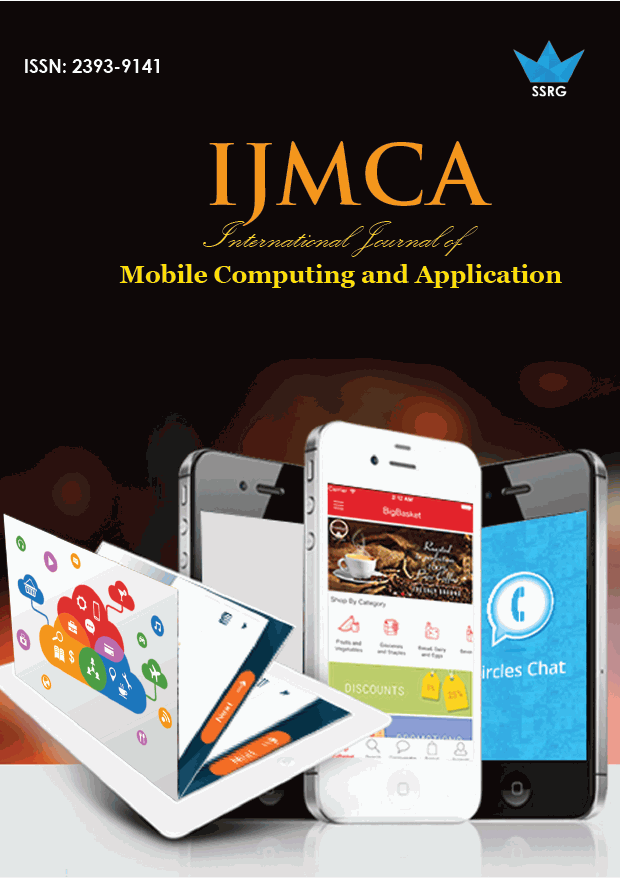Web 2.0 Mashup Spatial Web Service Architecture Agile Modeled Privacy Design – Case Study Evaluations and Validations extended to Cloud Big Data and IOT

| International Journal of Mobile Computing and Application |
| © 2016 by SSRG - IJMCA Journal |
| Volume 3 Issue 3 |
| Year of Publication : 2016 |
| Authors : Dr.D.Shravani |
How to Cite?
Dr.D.Shravani, "Web 2.0 Mashup Spatial Web Service Architecture Agile Modeled Privacy Design – Case Study Evaluations and Validations extended to Cloud Big Data and IOT," SSRG International Journal of Mobile Computing and Application, vol. 3, no. 3, pp. 27-33, 2016. Crossref, https://doi.org/10.14445/23939141/IJMCA-V3I6P101
Abstract:
This research paper deals with Web 2.0 Mashup Spatial Web Service Architecture Agile Modeled Privacy Design with case studies evaluations and validations extended to Cloud Big Data and IOT.
Keywords:
Security Engineering, Security Architectures, Web Services, Cloud Computing, Big Data, IOT
References:
[1] Nina Godbole [2009], “Information Systems: Security Management, Metrics, Frameworks and Best Practices”, Wiley India Publishers, Preface pp. 1 – 14.
[2] Nils Agne Narbotten [2009] , “XML and Web Services Security Standards”, IEEE Communications Survey and tutorials, Vol 11, No 3, Third Quarter, pp. 4 – 21
[3] Ozgur Erol et al, [2009], “A Framework for Enterprise Resilience using Service Oriented Architecture approach”, IEEE Sys Con 2009, 3 rd annual IEEE International Conference March 23 – 26.
[4] Patrick Stuedi, Iqbal Mohammed, Doug Terry, [2010], “Where Store: Location-based Data Storage for Mobile devices Interacting with the Cloud”, MCS 10, ,San Francisco USA, ACM 2010 , (Microsoft Research) , June 15, 2010 , pp. 1 – 10.
[5] Rafuel Accorsi, Claus Wonnemann: Indico. “Information flow analysis of Business Processes for confidentiality requirements”, pp. 1-16
[6] Reza B’Far [2005], “Mobile Computing Principals – Designing and Developing Mobile Applications with UML and XML”, Cambridge University Press, ISBN: 0-521-69623-2, pp. 146 – 198.
[7] Ross Anderson, 2003, “Security Engineering: A guide to building Dependable Distributed Systems”, Wiley publishers, pp. 1 – 19.
[8] Sami Baydeda, Matthias Book, Volker Gruhn (Eds.) [2005], “Model-Driven Software Development”, © Springer-Verlag Berlin Heidelberg, pp. 18-22.
[9] Sandeep Chatterjee [2004], “Developing Enterprises Web Services An Architects Guide”, Pearson, pp. 67 – 98.
[10] Sasikanth Avancha [2008], “A Framework for Trustworthy Service Oriented Computing”, ICISS 2008, pp. 124 – 132.
[11] Sarah Spiekermann, Lorrie Cranor [2009], “Engineering Privacy”, IEEE Transactions on Software Engineering”, Vol 35 No 1 January February 2009 pp. 67 – 82
[12] Satoshi Makino, Takeshi Imamura, Yuichi Nakamura [2004], “Implementation and Performance of WS-Security”, International Journal of Web Services Research, Jan-March 2004, Idea Group Publishing, pp. 58-72.
[13] Sebastian Hohn, Lutz Lowis, Rafael Accorsi, Albert- Ludwig [2009], “Identification of Vulnerability Effects in Web Services using Model-Based Security” IGI Global, Information Science Reference, DOI:10.4018/978-1-60566-950-2.ch001, pp. 1 – 32.
[14] Soumya Simanta, Ed Morris, Sriram Balasubramaniam, Jeff Davenport and Dennis B.Smith [2009], “Information Assurance Challenges and Strategies for Securing SOA Environments and Web Services”, IEEE SysCon 2009—3 rd Annual IEEE International Systems Conference, Vancouver, Canada, March 23 – 26, pp 1 – 4.
[15] Spyvain Halle, Roger Villemaire, Omar Cherkaoui [2009], “Specifying and Validating Data-Aware Temporal Web Services properties”, IEEE Transactions J. Breckling, Ed., The Analysis of Directional Time Series: Applications to Wind Speed and Direction, ser. Lecture Notes in Statistics. Berlin, Germany: Springer, 1989, vol. 61.

 10.14445/23939141/IJMCA-V3I6P101
10.14445/23939141/IJMCA-V3I6P101